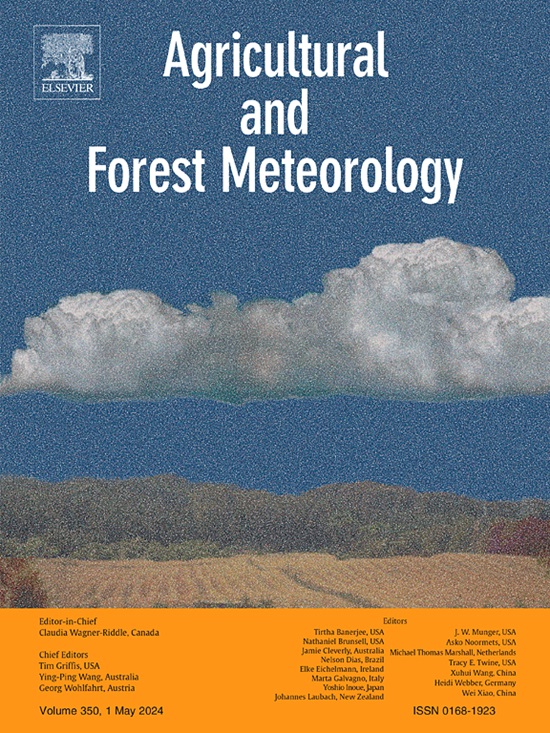Multifactorial interactions contribute to contrasting wildfire trends at mid–high latitudes of the Northern Hemisphere
IF 5.6
1区 农林科学
Q1 AGRONOMY
引用次数: 0
Abstract
The contrasting changes in wildfires reflect their diverse responses to bioclimates, vegetation dynamics, and human activities. However, how wildfire drivers interact to shape contrasting wildfire dynamics remains unclear. Here, wildfire dynamics at mid–high latitudes (≥30°N) were analyzed using a burned area dataset from 1982 to 2018. We integrated structural equation modeling with fire regime triangle theory to define flammability, fuel, and human ignition as latent variables, thus explaining the major causes of contrasting wildfire trends. Wildfires increased in 2.91 % of land areas and decreased in 8.30 % at mid–high latitudes, exhibiting contrasting trends within and across ecoregions, in which flammability, fuel, and human ignition had impacts on wildfires with ratios of 0.63, 0.56, and 0.50, respectively. Temperature-driven flammability variations led to increasing trends in wildfires in fuel-rich forests, while increasing flammability, combined with reduced fuels from water deficits, caused decreasing trends in wildfires, especially in arid temperate grasslands. Moreover, increased natural and human ignitions led to increasing trends in wildfires in high-latitude ecosystems, whereas intensified human activities suppressed wildfires in densely populated areas, leading to declining wildfire trends. These results suggest that flammability impacts wildfire trends oppositely depending on fuel conditions, and human ignition has polarized effects on wildfire trends due to varying intensity and direction of human activities. Such interactions contribute to contrasting wildfire trends and imply that warmer climates and human activities will exacerbate contrasting wildfire dynamics. Our study improves the understanding of long-term wildfire trends, aids in exploring terrestrial carbon cycles under climate change, and supports practical wildfire management.
求助全文
约1分钟内获得全文
求助全文
来源期刊
CiteScore
10.30
自引率
9.70%
发文量
415
审稿时长
69 days
期刊介绍:
Agricultural and Forest Meteorology is an international journal for the publication of original articles and reviews on the inter-relationship between meteorology, agriculture, forestry, and natural ecosystems. Emphasis is on basic and applied scientific research relevant to practical problems in the field of plant and soil sciences, ecology and biogeochemistry as affected by weather as well as climate variability and change. Theoretical models should be tested against experimental data. Articles must appeal to an international audience. Special issues devoted to single topics are also published.
Typical topics include canopy micrometeorology (e.g. canopy radiation transfer, turbulence near the ground, evapotranspiration, energy balance, fluxes of trace gases), micrometeorological instrumentation (e.g., sensors for trace gases, flux measurement instruments, radiation measurement techniques), aerobiology (e.g. the dispersion of pollen, spores, insects and pesticides), biometeorology (e.g. the effect of weather and climate on plant distribution, crop yield, water-use efficiency, and plant phenology), forest-fire/weather interactions, and feedbacks from vegetation to weather and the climate system.

 求助内容:
求助内容: 应助结果提醒方式:
应助结果提醒方式:


